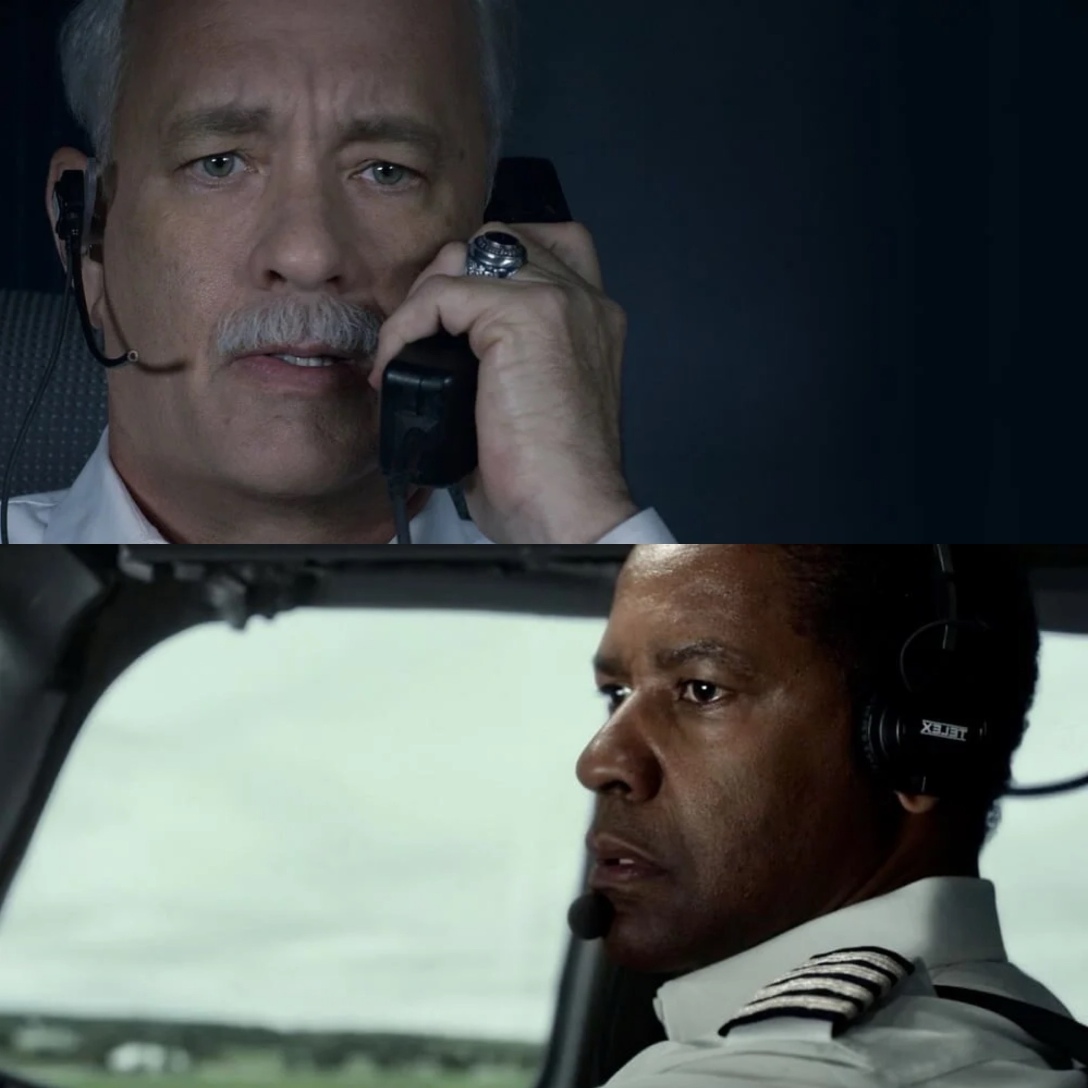From natural to man-made to otherworldly, motion pictures depicting the various forms of disasters and the turmoil, fear, and anxiety they cause are a spectacle to behold by moviegoers. Perhaps it is the adrenaline-rush-inducing and thrilling action displayed on the screen or the human element of how people band together for the common good to overcome the obstacle at hand, disaster films are always popular, especially for those who have never found themselves in the middle of an earthquake or a deadly tornado! While disaster pictures and their appeal peaked during the 1970s, their relevance has dwindled significantly since. Now a rarity, disaster films have shifted their focus from visual special effects spectacles and intense action sequences to exploring the state of mind of those involved and their responsibility in saving lives.
Two exemplary motion pictures that examine the cause of two horrific events, airplane emergencies, and the pilots tasked with averting the ultimate disaster from occurring, are Clint Eastwood’s Sully (2016) and Robert Zemeckis’ Flight (2012). Although both films involve airplanes in peril, one as a result of an act of God and the other a plane manufacturing defect, Sully and Flight dive into the minds and trauma affecting the pilots in charge of operating the planes despite both pilots being the opposites of one another. Featuring fine craftsmanship and solid direction from two of mainstream Hollywood’s top filmmakers, along with strong and emotional performances by Tom Hanks as Sully Sullenberger and Denzel Washington as Whip Whitaker, Sully and Flight are stellar additions to the airplane disaster genre with an added emotional and human element that will have you on the edge of your seat!
Under Eastwood’s economical, minimalist, and precise direction, Sully is the better-crafted film, not only narratively and thematically but stylistically. Visually straightforward and only capturing what is important, Sully and Flight briefly showcase the airplane accidents as Captain Sully slowly glides his plane with 155 total passengers and crew onboard onto the Hudson River and Captain Whitaker as he inverts his plane upside down in midair before crashing down in an open field next to a church saving 96 out of 102 passengers and crew. While Flight follows the traditional three-act linear structure in documenting the events of the crash, Whitaker’s alcohol and drug addiction, as well as the NTSB’s investigation, Sully takes a more stylish approach, particularly in displaying Captain Sully’s trauma, guilt, and paranoia.
Under pressure from the media and also experiencing scrutiny from the NTSB, Sully, at various moments, finds himself lost in his thoughts either by staring out of windows or at mirrors. While lost in those thoughts, Sully imagines his plane crashing into New York City buildings, almost as if Sully, his co-pilot Jeff Skiles (played by Aaron Eckhart), and every passenger was meant to die but did not, Sully knowing full well that was most likely what would have happened had he not landed the plane on the Hudson River. At other times when Sully attempts to disassociate, Sully transports himself back to his past, when he was learning to fly and when flying in the airforce. Visually, we subtly break from the film’s continuity without flashy transitions or interruptions. We as the audience know a flashback is taking place due to the clothing, cars, and aircrafts displayed as well as Sully’s appearance. No text or other indication is utilized to alert the viewer, instead, Eastwood and his editor trust and know the audience is capable of understanding what is occurring. While it is obvious Sully did what he had to do to save his passengers despite not taking the proper protocols per the NTSB, Sully still suffers remorse because he takes his profession and the value of life seriously, unlike Whitaker.
Although Whitaker is initially hailed as a hero by the media and those involved with the plane crash, Whitaker’s heroic act comes as a surprise, especially knowing his level of intoxication during the flight and his uncontrollable addiction to drugs and alcohol. As the crash investigation deepens, so too does Whitaker’s descent into drunkenness and irresponsibility. To Whitaker, his demons should not deter from the fact that he saved many lives on his plane and averted the emergency from being worse than it could have been. There is no doubt that Whitaker’s experience and expertise as a pilot played a role in the stunt he pulled midair despite being under the influence, but his lack of accountability and recognition of his addictions and dependency on illicit substances is appalling. Typical behavior displayed by addicts, Whitaker attempts to better himself but cannot resist temptations and blames his faults and actions on others and the bureaucratic system, the NTSB, for wreaking havoc on his life. In a time of contemplation and the ultimate realization of how his careless actions affected those around him, Whitaker owns up to his mistakes and does what is right.
Two polar opposite representations of men doing what needed to be done to save lives despite set protocols, Captain Sully in Sully and Captain Whitaker in Flight are held together by their instincts and judgment in accomplishing what was necessary for the common good. Although one character is more likable than the other, both Sully and Whitaker are admirable in their convictions in defending their heroic acts despite adversity from those at the top. From a cinematic and technical standpoint, Sully and Flight are standard and conventional but are precisely crafted by their respective directors. As serious and dramatic motion pictures for adults, the films are carried by the always stellar to-watch Tom Hanks and Denzel Washington. Sully and Flight may have you rethink stepping on board an airplane but both films are undoubtedly worthy of being watched!

